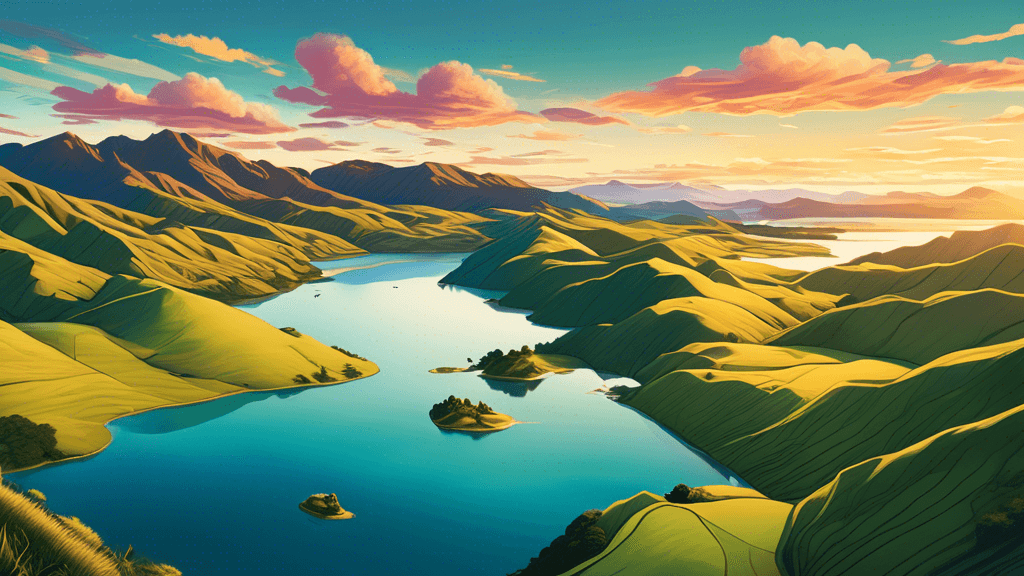
Echoes of the Land: Exploring New Zealand Through Landscape Photography
Share
Understanding the Allure of New Zealand's Landscapes
New Zealand often features as an ethereal backdrop in blockbuster movies and enthralling nature documentaries, mesmerizing viewers with its dazzling arrays of landscapes—from serene fjords cutting through rugged terrains to lush green blankets covering vast rolling hills. But what makes New Zealand's landscapes uniquely captivating, and why should photography enthusiasts consider this distant land as a canvas for their art?
The Geographical Diversity of New, Zealand
Located in the southwestern Pacific Ocean, New Zealand is comprised of two main islands, each with distinct geophysical contours and climates contributing to their unique ecologies. This geographical diversity presents a paradise for landscape photographers. Here are some key features:
- The North Island is known for its volcanic landscapes, vibrant Maori culture, and major cities such as Wellington and Auckland.
- The South Island boasts dramatic topography characterized by the Southern Alps, majestic fjords, and pristine lakes.
Such variety ensures that photographers can capture everything from subtropical forests and volcanic plateaus to Alpine scenery within relatively short distances.
The Role of Light and Weather in Photography
New Zealand's position on the globe and its varied landscapes greatly influence the local light and weather conditions, which can dramatically alter the appearance and mood of the same setting. The interplay of light and weather creates dynamic scenes that are a photographer’s dream. But how exactly does this affect landscape photography?
Capturing the Magic: When to Visit and What to Bring
Deciding when to visit New Zealand for photography purposes largely depends on the kind of natural aesthetics you aim to capture. Here’s a seasonal breakdown:
- Spring (September to November): This season is ideal for photographing vibrant wildflower blooms and lush green landscapes.
- Summer (December to February): Long days and abundant sunlight are perfect for exploring coastal regions and capturing the azure skies.
- Autumn (March to May): Photographers can capture stunning autumnal colors, especially spectacular in forested areas like Central Otago on the South Island.
- Winter (June to August): The best time for capturing snowy landscapes, particularly around the Southern Alps, giving a dramatic contrast against the crisp, clear winter sky.
In terms of equipment, regardless of the season, it’s essential to bring gear that can withstand New Zealand’s changeable weather. Waterproof covers for cameras, moisture-absorbing silica gel packets inside camera bags, and adequate protective clothing are all must-haves.
Environmental Conservation and Responsible Photography
While pursuing the perfect shot, it's crucial to consider the impact of your activities on the natural environment. New Zealand sets a global example in conservation efforts, and as visitors, photographers have a responsibility to uphold these standards. What practices should landscape photographers adopt to minimize their ecological footprints?
- Stick to marked paths to avoid disrupting native flora and fauna.
- Clean your gear, like tripods and boots, when moving between ecosystems to prevent the spread of invasive species.
- Respect wildlife by maintaining a safe distance and using appropriate zoom lenses instead of getting too close.
In the Frame: A Closer Look at Some Oft-Photographed Sites
Among the myriad picturesque locations, a few stand out as favorites among professional and amateur photographers alike:
- Milford Sound: Often facing inclement weather, this spot presents the dramatic beauty of cascading waterfalls and ethereal mists.
- Lake Tekapo: Famous for its lupin blooms and the UNESCO Dark Sky Reserve, offering stellar night-sky photography opportunities.
- Mount Cook National Park: Ideal for capturing rugged landscapes and pristine glacial features.
Concluding Thoughts
New Zealand offers an unmatched variety of landscapes that can not only enhance the skills of photographers but also expand their appreciation of nature’s artistry. Its diverse ecosystems challenge one to not just view landscapes as backdrops but as active, evolving elements of our planet.
Are you ready to embark on a photographic journey through one of the world’s most picturesque countries? Will you take up the challenge to capture and conserve the ethereal beauty of New Zealand, respecting and preserving its integrity for future generations? The opportunity to blend your passion for photography with the championing of environmental conservation awaits!





